This mandora, originally built by Gaspare Vimercati in Milan in the mid-to-late 18
th century and delivered to our workshop in several separate pieces, was in very poor shape.
The soundboard edging has suffered terribly, the bracing appeared to have survived intact by the edging had been torn away, the parchment rosette had deteriorated badly, the head was in pieces and missing some features, and the shell was split in several places.
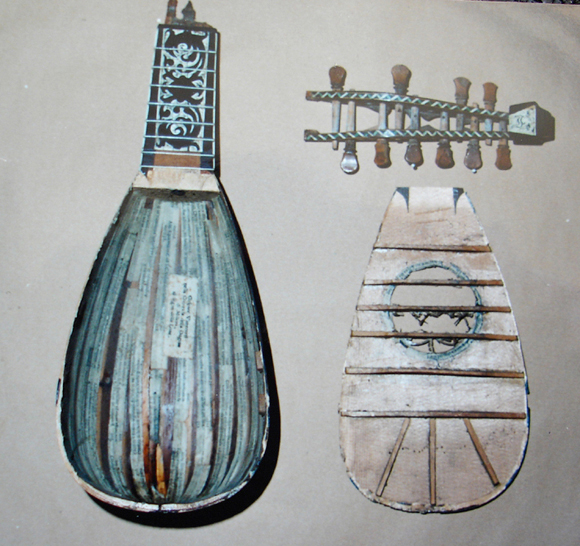
Since the project had been sponsored by a museum, in Nice, this already difficult restoration also had to tailor for a series of ‘specifications’.
Indeed, ‘to specifications’ is a fair description of approach deployed in developing a strategy to restore this instrument. The restoration strategy was the fruit of negotiations between the client, in this case a museum, and the restorer, balancing the physical condition and historical status of the instrument with the use intended for it: as museum exhibit or concert instrument, etc… The technical, mechanical, hands-on experience acquired over years of restorations enables the restorer to take carefully-reasoned decisions on the potential for restoration and offer the curator a step-by-step proposal that covers covering the resources to be deployed to successfully complete the project.
In line with the specifications, we reinforced the edges of the soundboard by adding pieces of antique spruce order to create a support solid enough to withstand the subsequent steps of remounting the soundboard and gluing the edge binding to finish.
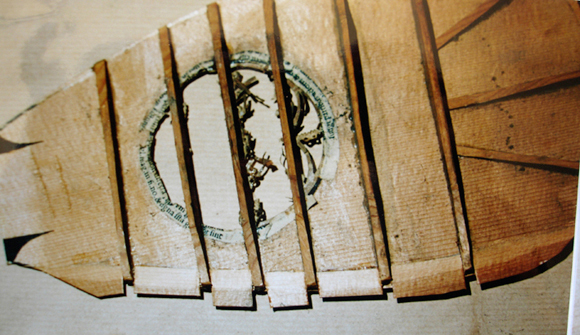
The toughest challenge in this restoration project was to rebuild the parchment rosette. We first used a pair of tweezers to release the fragments that were attached to the soundboard. Then, using tracing paper folded into four and callipers, we recreated the original rosette design by a combination of unfolding and/or following the surviving lines. The final design was then overlaid and traced onto a new parchment from which we cut the rosette - minus the surviving parts. We glued this rosette between the unfolded and retightened parts of the original rosette and the bars crossing the soundtable. The next step was to paint our reworked rosette (using natural pigments and watercolours).
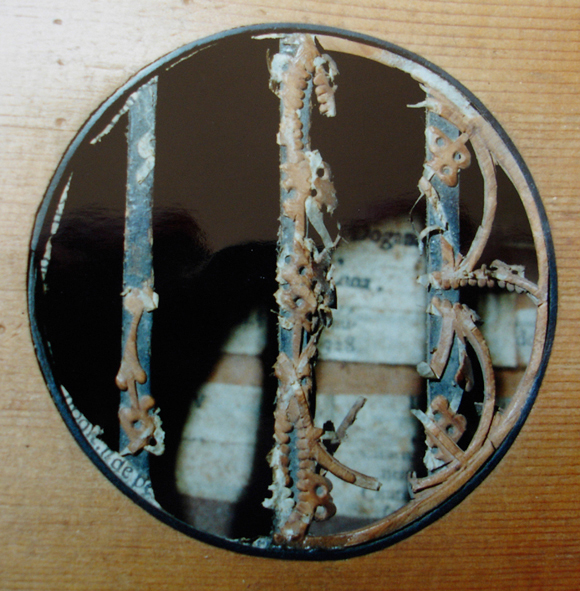
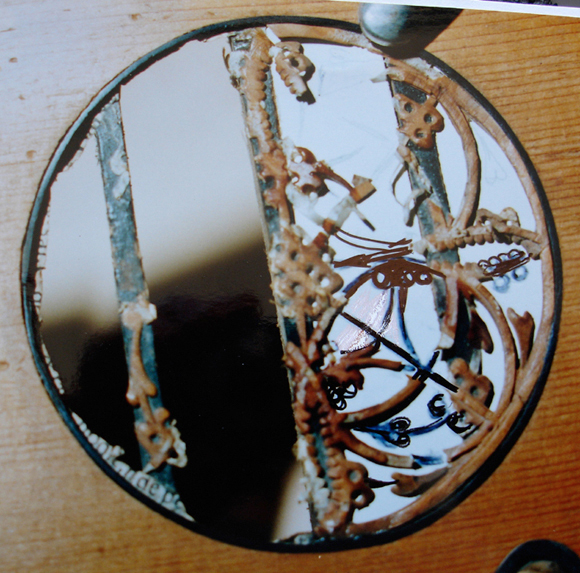
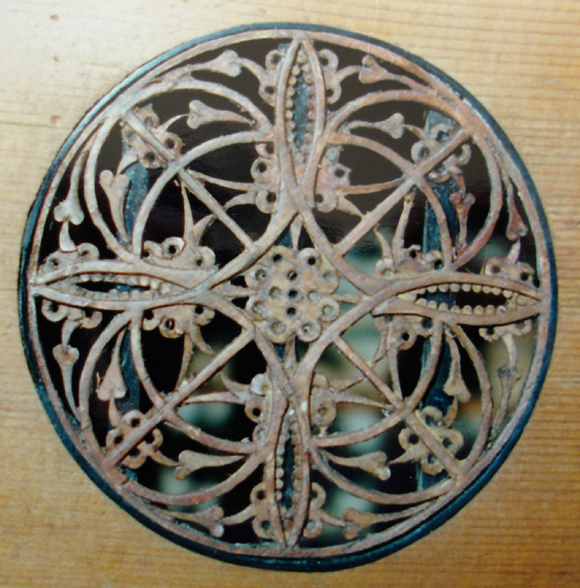
While this work on the soundboard was going on, the particularly dirty splits in the shell were being washed clean and stuck back together. The yew-tree ribs had visible sapwood along one of the edges, a common feature for the period, were relatively fragile and so needed some reinforcement at the break-points and the connecting joint. Given that cleats cannot be fitted onto an ovoid shell, the splits were lined with lightweight canvassing in a reworkable cotton with an organic-fibre structure similar to wood.
Although the head presented missing material, there was enough to make it easy to duplicate the missing elements using the surviving parts as a template, and so this part of the restoration was relatively hitch-free.
Then, after dusting away over two centuries of dirt that had been allowed to gather inside the shell, we closed the instrument and replaced the binding, correcting a few small defects en route. The outer shell was then brushed off, some essential colourwork adjustments were made using watercolour and varnish, and the gut strings were replaced so that this rare and interesting musical instrument could rediscover its authentic playability in all its glory.
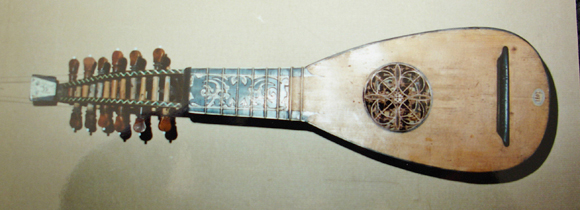

Nota-bene.
Since 2004, the application of the "laws regulating the Museums" has obligated the French museums to hire – for the restoration of objects kept in public collections – "habilitated" restorers. By these terms, we intend persons who have received the State diploma delivered by the Institute for the National Patrimony. This diploma covers all kinds of techniques and materials, but neither expertise of musical instruments nor lutherie or acoustics are taken in consideration on the cursus. From now on, only the "habilitated" restorer for "wood" (all the woods from all over the world?) is qualified to restore objects of the patrimony kept in our national collections and can equally treat beams or floors, furnitures or boats, statues and musical instruments as long as this person has the "habilitation". Therefore, a polemic has started between the museum curators who, realizing their incompetence in the field of lutherie wish to keep the historic instruments only for their visual and cultural aspect and the luthier who consider that the sound of an instrument, being its own specificity and identity, must be restored on the same level as the box that produces it.
Professionals who have – long before the title of "curator" was invented – analyzed, expertised, constructed and restored musical instruments (by countries and by categories: wind, stringed, keyboards, brass, etc.) find themselves put aside from the French public collections.
The "habilitation" for a non universitarian being almost impossible to obtain, these professionals have to apply their art to private collections.
Read: “Habilitation-restaurateur-des-musees.com” (in French).
